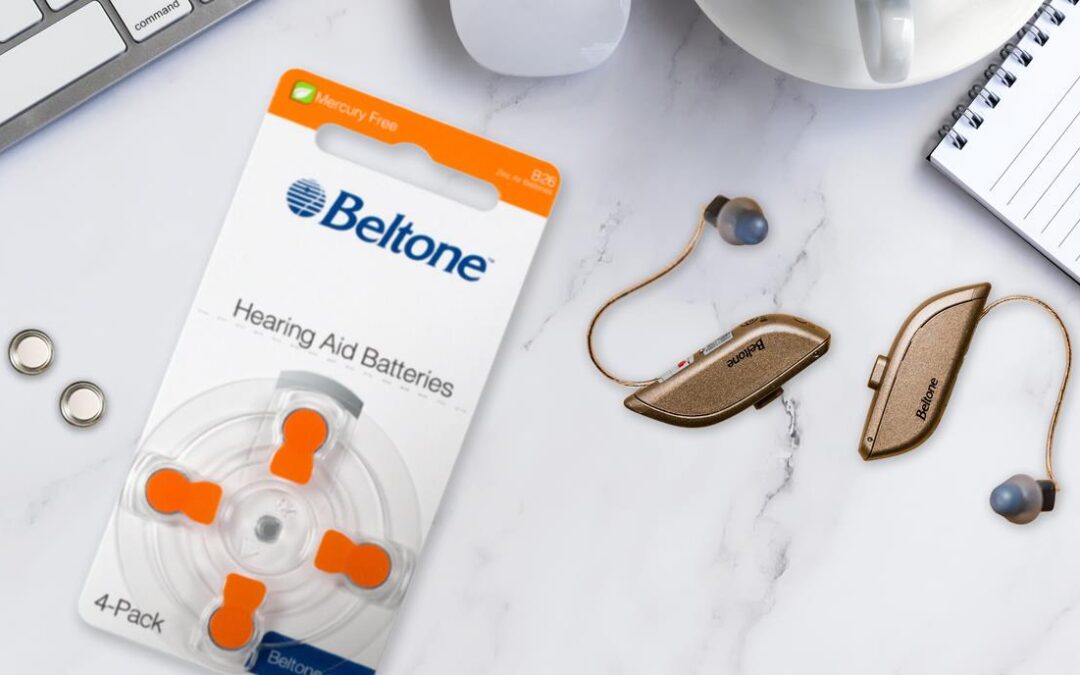Color coding helps with memory
If you’ve ever walked down the battery aisle at the grocery store or your local electronics shop, you’ve probably been overwhelmed by how many different types of batteries there are. Some are extremely common, like the AA or AAA battery, and some are very specific to a particular device or technology, like hearing aid batteries.
Hearing aid wearers already know that hearing aid batteries come in a variety of different colors, and these colors aren’t just for fun! So, if not to bring a fun element to wearing hearing aids, what do the colors of hearing aid batteries mean? In short, the colors are used to denote different types of batteries, so it’s easier for your brain to remember which battery your device takes and purchase the correct ones when you restock.
How do hearing aid batteries work?
Before we dive into the different types of batteries and the unique colors for each, let’s tackle a little “Hearing Aid Battery 101.” There are two main styles of hearing aid batteries – rechargeable and disposable – and there are pros and cons to each. For example, rechargeable batteries may be more environmentally friendly, but they are less convenient and can come with an expensive price tag upfront. On the other hand, disposable batteries are more convenient but you’ll be more frequently spending to purchase replacements.
Disposable batteries specifically are zinc-air batteries, meaning they contain zinc and are powered by exposure to the air. When you go to change the battery in your device, you’ll take a fresh battery from the pack and remove the tab that exposes the zinc to air. This reaction generates energy so they are ready to power up your device for its relative lifespan.
Different types of hearing aid batteries
There are four main types of disposable batteries used to power all different kinds of hearing aids, and each has a unique color to help users remember which battery to use in their devices.
Yellow batteries (Beltone’s B20): The yellow batteries are the smallest disposable batteries you can get and are compatible with receiver-in-the-ear (RITE) or completely-in-canal (CIC) devices. These batteries last somewhere around 3-7 days, and, because of their small size and compatibility with small devices, they are often used by those who have milder cases of hearing loss.
Orange batteries (Beltone’s B26): The orange batteries are slightly larger than the yellow ones and can last nearly twice as long (about 6-14 days). These batteries are used with behind-the-ear (BTE) and in-the-ear (ITE) hearing aids, which are two of the most common styles of devices.
Brown batteries (Beltone’s B347): The brown batteries have a similar lifespan to the yellow ones, but are a bit more versatile, powering BTE, RITE, and in-the-canal (ITC) devices.
Blue batteries (Beltone’s B900): Finally, the blue batteries are the largest and have the longest battery life (9-20 days), but they can only be used in BTE devices.
Tips to make your batteries last longer
One of the biggest challenges our patients have with hearing aids is prolonging the life of their hearing aid batteries, but there are a few simple ways you can extend the life of your hearing aid batteries to go longer between changes, including:
- Opening the battery door at night to air it out from heat and humidity
- Allowing batteries to be exposed to air for longer before installing
- Avoid buying batteries in bulk to avoid hitting expiration dates before getting to use them
–
While we’re sure that hearing aid batteries will continue to advance to better forms in the coming years, we think the current color-coded battery system is pretty ingenious, and, whether you realize it or not, color is probably a big reason why you remember which batteries your device takes when you go to purchase new ones.
Did you know that you can restock hearing aid batteries and other accessories right on the Beltone Tristate website? Order your next set of battery refills today!

